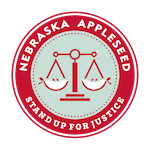We believe that all youth and families interacting with the foster care, or “child welfare,” system should be treated equitably, from the front door to their transition out of care.
May is Foster Care Awareness Month and last May, we published a series of blogs highlighting the realities of the foster care system – especially that it disproportionately and unnecessarily targets, separates, and harms youth and families of color. This Foster Care Awareness Month, we are following up to repeat and reinforce this reality.
Data unequivocally demonstrates that the child welfare system is incredibly disproportionate: youth and families of color’s percentage of the foster care population is significantly higher than their percentage of the general population. This is especially true for Black and Native youth, and youth of color that identify as LGBTQIA+.
Such overrepresentation grows with each major decision point in a child welfare case, with youth of color being more likely to be reported, investigated, enter foster care, stay longer, be permanently separated from their families, and then less likely to achieve permanency and/or be adopted. This is all true despite evidence that families of color are not more likely to harm their children than white families and are targeted for circumstances that white families similarly find themselves in, mostly including poverty and income instability.
More concerningly, Nebraska’s disproportionality is consistently among the worst in the country with rates higher than the national rate for every non-white category measured:
- Native youth represent 1.1% of Nebraska’s general youth population but are 3.8% of the child welfare population.1 The national disproportionality rate for Native youth is 3.0 but Nebraska’s is 6.0.2
- Black youth represent 6.0% of Nebraska’s general youth but are 14.7% of the child welfare population.3 The national child welfare system disproportionality rate for Black youth is 1.6 but Nebraska’s is 3.3.4
- Nebraska’s rates of child welfare system entry for Black and Native youth are more than double the national rates.5
- Nebraska is the only state to rank in the 10 most disproportionate states by child welfare investigation in every category of race and ethnicity measured. It is sixth worst for Latinx youth, fourth worst for Native youth, and third worst for Black youth.6
Such high disproportionality rates are inexcusable. Exposure to the child welfare system subjects youth and families to traumatic interferences, separation, treatment, and instability and triggers cycles of system involvement, poverty, and trauma. Black and Native youth are subjected to this harm more, without evidence that they are more likely to need intervention. Moreover, Nebraska is in the top ten states with the lowest rates of report substantiation, meaning we have unusually high rates of over, or unnecessary, reporting of families into the child welfare system.7
Nebraska’s child welfare system must do better. Nebraska must do more to acknowledge this disproportionality and actively pursue community-driven solutions that reduce disparities, unnecessary entry into the child welfare system, and inequities within it.
Here are bills currently pending at the Nebraska Legislature that would support this work:
- LB 14 (Dungan) – Would expand Nebraska’s extended foster care program (the “Bridge to Independence” Program) to include youth with experience in the juvenile justice system to better support them as they transition into adulthood.
- LB 42 (Hansen) – Would narrow the definition of child neglect in Nebraska to ensure families are not entering the system for experiencing poverty alone.
- LB 271 (McKinney) – Would narrow who is required to report suspected child abuse or neglect and require all mandatory reporters to undergo training, including in implicit bias and trauma.
Nebraska Appleseed is committed to supporting the above bills and continuing to prioritize work that advances racial and ethnic equity within the child welfare system. As always, if you feel compelled to share your own thoughts and experiences with Nebraska’s child welfare system, or to help advocate for these solutions, please reach out to Schalisha Walker at swalker@neappleseed.org. We’d really love to hear from you.
__________________________________
- 2022 Kids Count in Nebraska Report, Voices for Children in Nebraska, 64 (2023).
- The Adoption and Foster Care Analysis and Report System (AFCARS): Entry & Disproportionality Rates by Race and Ethnicity for FY 2020, U.S. Department of Health and Human Services, Administration for Children and Families, Children’s Bureau (2020).
- 2022 Kids Count in Nebraska Report, Voices for Children in Nebraska, 64 (2023).
- The Adoption and Foster Care Analysis and Report System (AFCARS): Entry & Disproportionality Rates by Race and Ethnicity for FY 2020, U.S. Department of Health and Human Services, Administration for Children and Families, Children’s Bureau (2020).
- Id.
- “If I Wasn’t Poor, I Wouldn’t Be Unfit:” The Family Separation Crisis in the US Child Welfare System, Human Rights Watch, Table 9 (Nov. 17, 2022).
- Id. at Table 13.

